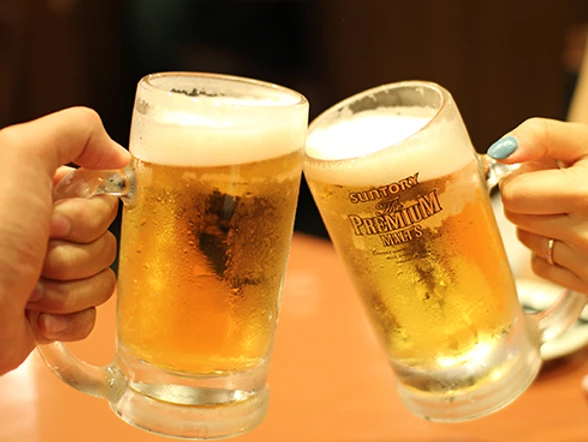The best test of clean beer lines is the clean, pure taste of beer. If anything tastes off or funky, raise an eyebrow. Without regular maintenance and cleaning, beer lines get dirty fast. If the beer tastes stale or sour, this is a sign of dirty beer lines. Another taste, or “mouth feel” is that of butter or a fatty, slippery buttery feeling in the mouth. This indicates the presence of diacetyl.
Another indicator of dirty beer lines is when your patrons find something floating in their beer! This has happened to me as a patron of a local pub. A complete turn-off! Not good for patron retention or the image of your establishment. Bacteria, mold, and old beer cause these buggers. A SURE sign of the need for a good thorough line cleaning!
You can also detect dirty draft lines by looking at them. Cloudy lines, moldy faucets, and mold on your under-bar couplers are clues. These are telltale signs that your equipment needs a good, thorough cleaning.
But, the worst tell-tale sign of all is sure to leave a “bad taste” in your patron’s mouth. This is a true story that happened to me and it was NOT pretty. It was a fun night out with friends at a local pub (unnamed) enjoying boots of beer and great music. I woke up the next day feeling like I had been hit by a Mack Truck! Not a hangover, but the symptoms of the worst food poisoning I have ever had. Stomach upset, throbbing head, fever . . . horizontal for the day. Did I really drink that much? I hadn’t overindulged since my 20s so I knew it wasn’t that. Then the texts started coming in from the friends I was with the night before. We all had it! The only thing the group of us had consumed in common was the beer at this “now-closed!!!” pub. Dirty beer lines!! Thank God they closed their doors about a year later. No clue how they stayed in business so long!
LET’S GET A LITTLE MORE SCIENTIFIC
There are two common contaminants that can change the taste of your beer. Diacetyl and Acetic Acid/Acetaldehyde. Each of these has an identifiable flavor. A simple taste test can determine if either of these is the culprit.
Diacetyl
Diacetyl is the chemical used to give the buttery flavor in microwaveable popcorn. That’s where a buttery taste should be, not in your beer!
So how does diacetyl get into beer in the first place? It’s a natural by-product of fermentation. Diacetyl develops through the normal metabolism of brewer’s yeast. Brewer’s yeast first forms alpha acetolactate which is tasteless. Alpha acetolactate converts to diacetyl as beer ages. It’s important for the beer to have plenty of contact time with the active yeast. This eliminates the diacetyl.
If you detect that diacetyl is still present, there are a couple of ways to get rid of it:
1. Use what’s known as diacetyl rest. Allow the fermented beer to sit with the yeast for 2-3 days after the end of fermentation.
2. Your best odds are with making a big active starter with neutral ale yeast. Active yeast metabolizes diacetyl. Pitch it when the beer reaches 70F.
Acetic Acid (Acetaldehyde)
Like diacetyl, acetic acid and acetaldehyde are also natural by-products of fermentation. Usually, they are completely removed by the end of the fermentation process.
Acetic acid and acetaldehyde are cousin chemicals. Acetaldehyde is a precursor to acetic acid. Acetic acid is what gives beer a sour vinegar-like taste. Acetaldehyde produces a sourness like the taste of green apples. Acetaldehyde is usually removed by yeast before the end of the fermentation process. A bacterial buildup in dirty beer lines can cause residual fermentation. This is what adds these chemicals back into the beer and their offensive tastes.
KEEPING YOUR DRAFT LINES CLEAN
Education, scheduling, and cleaning protocols are the keys to maintaining clean draft lines. Use the Brewers Association’s Draught Beer Quality Manual to educate your employees. All employees and managers should be familiar with this document. Keep a copy available in your employee area.
Clean your draft lines no less than every two weeks. Clean weekly if your draft lines are more than 25 feet long and/or you have a high-volume draft system. If you use an outside draft line cleaning service, make sure that you are a regular on their calendar. If you clean your own beer lines set up a cleaning schedule and stick to it.
Be sure to have clear, concise cleaning protocols for your staff. Be consistent about enforcing your established protocols and policies.
Clean beer lines are necessary to maintain your hard-earned reputation. Word of mouth is the most powerful form of advertising, so keep your customers happy and healthy! Clean beer lines are not only essential to the health of your business. They are also essential to the health of your customers, without which you have no business!

